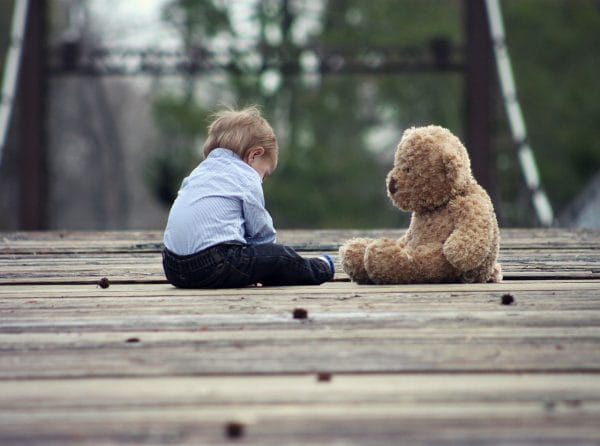Milestones of Speech Development: How Children Learn to Speak
Speech development is a crucial aspect of a child’s growth, encompassing the journey from a baby’s first coos to the complex sentences of a school-aged child. Parents and caregivers often marvel at how quickly children seem to pick up language, but this process is underpinned by a series of intricate milestones that are reached over time.
This article demystifies the process of speech development and provides insights into the milestones from infancy to the early years of schooling.

What is Speech Development?
![]()
Speech development refers to the progression of acquiring the ability to express thoughts and feelings through spoken language. This includes the development of articulation, vocabulary, grammar, and social language skills. While every child is unique and develops at their own pace, there are common patterns and stages that most children go through as they learn to speak.
Speech Development Milestones
![]()
Understanding speech development milestones helps parents and caregivers recognize and encourage their child’s linguistic progress. Here’s a breakdown of what to typically expect at different ages:
Baby Speech Development (0-12 Months)
- 0-3 months: Babies start by cooing and making pleasure sounds. They begin to recognize voices, especially those of their parents.
- 4-6 months: Babbling begins, including sounds like “baba” and “dada.” Babies start to play with sounds and might even respond to their name.
- 7-12 months: Babbling becomes more varied, with longer sequences of sounds that imitate the rhythms and patterns of adult speech. Babies may start using gestures to communicate, like waving goodbye.
Toddler Speech Development (1-3 Years)
- 12-18 months: A child’s first words typically emerge. They may be simple and not fully formed, but they usually have meaning to the child and those closest to them.
- 18-24 months: Toddlers start to combine words into two-word phrases like “more juice” or “baby cry.”
- 2-3 years: Vocabulary expands rapidly, and toddlers begin to form sentences, ask questions, and use language for different purposes, such as greeting people or requesting something.
Speech Development in Preschool Children (3-5 Years)
- 3-4 years: Children’s sentences become longer and more complex. They can converse in more detailed ways and their speech is understandable to strangers most of the time.
- 4-5 years: Preschoolers refine their language skills, telling stories and engaging in detailed conversations. They understand more abstract language concepts and can follow multi-step directions.
Factors Influencing Speech Development
![]()
Several factors can influence a child’s speech development, including:
- Genetics, which can play a role in language acquisition capabilities.
- Parental interaction and the language-rich environment at home.
- Exposure to reading and storytelling, which fosters vocabulary and comprehension.
- Health issues, such as hearing problems or developmental disorders, which can affect language skills.
- Social interaction with peers and adults, which promotes practical language use.
Critical Periods for Speech Development
![]()
Research suggests that there are critical periods for speech and language development in children. These are windows of opportunity during which the brain is particularly receptive to learning language. If these critical periods are missed without exposure to language, it may be more challenging to develop normal speech and language skills later on.
Speech Development in Children with Special Needs
Children with special needs may experience speech and language delays or disorders. For example, children with autism spectrum disorder (ASD) often have difficulties with communication that might include delayed speech development, trouble with conversational skills, or repetitive speech patterns. Early intervention and speech therapy are vital for helping these children reach their full potential in language development.
Encouraging Speech Development
![]()
Parents and caregivers play an essential role in encouraging speech development. Here are some ways to foster language growth:
- Engage in regular conversation with your child, even before they speak their first words.
- Read to your child daily, pointing out and naming objects and pictures in books.
- Sing songs and nursery rhymes to help develop rhythm and phonemic awareness.
- Encourage your child to express themselves and listen attentively when they speak.
- Expand on your child’s speech to model more complex language structures.
- Provide a variety of experiences that can serve as opportunities for new vocabulary and concepts.
When to Seek Help
![]()
If you notice that your child is not meeting speech development milestones, it may be time to seek help. Early signs of a potential speech delay include:
- Not babbling by the age of 9-12 months.
- Not speaking single words by 15 months.
- Not combining words by 2 years.
- Difficulty understanding simple instructions.
- Unclear speech or a lack of progress in speech clarity after 3 years old.
Consulting with a pediatrician or a speech-language pathologist can provide guidance and support if there are concerns about a child’s speech and language development.
Conclusion: The Journey of Speech Development
![]()
Speech development is a fundamental aspect of childhood growth that sets the foundation for communication and learning. Recognizing the milestones of speech development—from baby speech development to the more complex language skills of a preschooler—is crucial for parents and caregivers.
While there is a typical pattern of language acquisition, each child is unique, and some may require additional support to reach their speech development milestones. By fostering a nurturing and language-rich environment, and seeking early intervention when necessary, caregivers can significantly contribute to the successful speech and language development of their children. Remember, communication is the key to unlocking a world of possibilities for every child.





